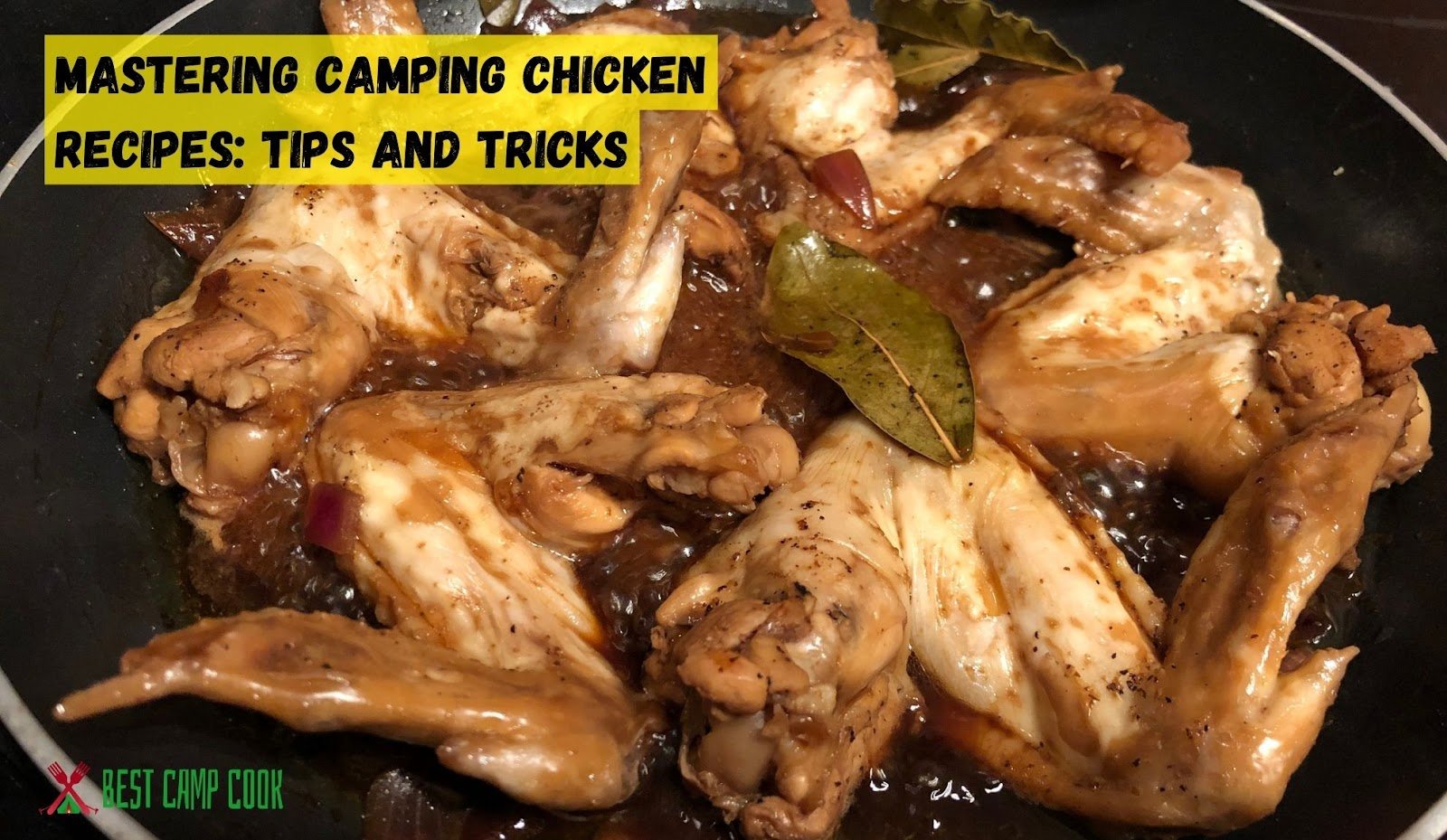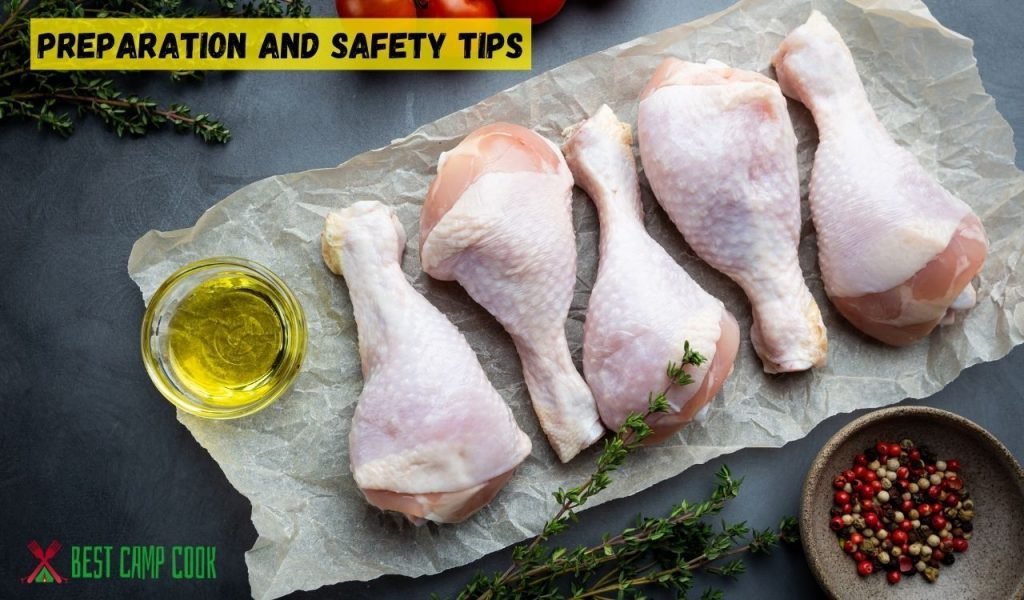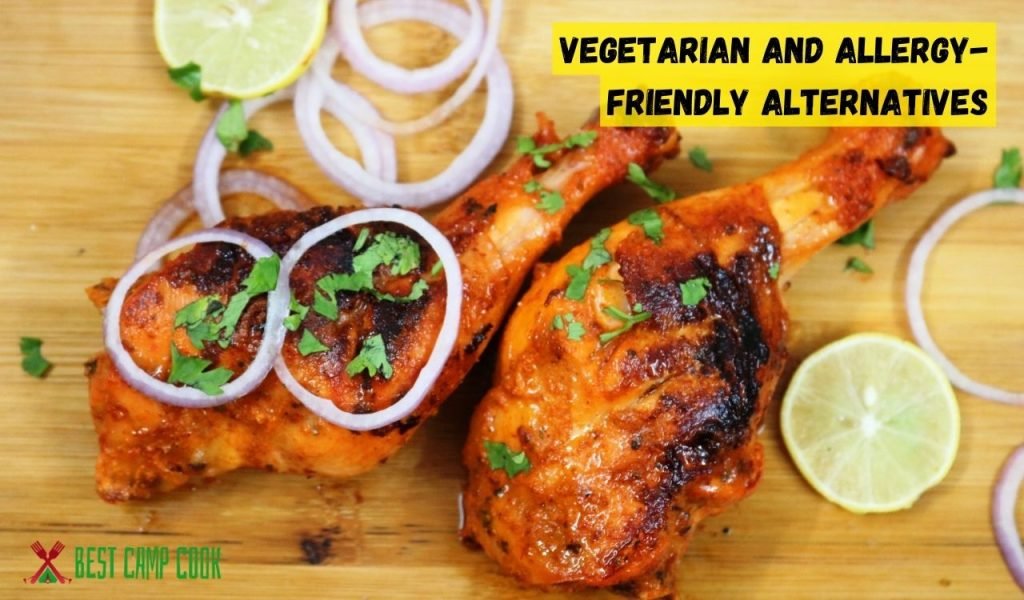Physical Address
304 North Cardinal St.
Dorchester Center, MA 02124
Physical Address
304 North Cardinal St.
Dorchester Center, MA 02124

Looking to elevate your camping cuisine? Discover the world of camping chicken recipes! Whether you’re a seasoned outdoor cook or just starting, these recipes will add flavor to your adventures. From smoky campfire grills to sizzling skillet dishes, we’ve got your camping chicken cravings covered. Say goodbye to dull camp meals and get ready for a tasty outdoor experience. Let’s dive into the sizzle and taste of camping chicken recipes!
Main Summary: Camping Chicken Recipes
Camping chicken recipes offer delicious, outdoor-friendly meals. From grilled chicken skewers to foil packet dinners, discover easy-to-make dishes that will satisfy your camping cravings. Enjoy the great outdoors with these flavorful chicken recipes.
Before we embark on our culinary journey, let’s get our Camping kitchen setup. Here’s a rundown of the essential camping gear you’ll need to whip up those delectable chicken dishes under the open sky.
Whether you’re a fan of the traditional campfire or prefer the convenience of a portable stove, having a reliable heat source is paramount. Consider investing in a quality camp stove that’s easy to set up and provides consistent heat.
Pack lightweight cookware and utensils, such as a skillet, saucepan, tongs, and a spatula. Look for items made from durable materials like stainless steel or cast iron. Don’t forget to bring a pot or kettle for boiling water.
Keeping your ingredients fresh is essential. Opt for airtight food storage containers to store marinated chicken, veggies, and spices. Ziplock bags are your best friends when it comes to organizing ingredients efficiently.

Now that we’ve got our gear sorted let’s talk about some preparation and safety tips to ensure your camping chicken adventure is not only delicious but safe too.
When it comes to handling chicken, food safety is paramount. Follow these golden rules:
Save time and mess by preparing chicken marinades at home. Mix your favorite herbs, spices, and sauces in a ziplock bag, add the chicken, and let it marinate in the cooler while you travel to your campsite.
If you’re planning to cook over an open flame, follow these campfire safety tips:
Planning a camping trip and want to make sure your meals are not just easy but also packed with flavor? Look no further! These camping chicken recipes are here to save the day. Get ready to savor the great outdoors with these simple yet scrumptious dishes.

While chicken is a camper’s favorite, it’s important to cater to various dietary preferences and allergies. Here, we’ll explore some vegetarian and allergy-friendly alternatives to ensure that everyone around the campfire can enjoy a satisfying meal.
For our vegetarian friends, tofu or tempeh can be excellent substitutes for chicken. Marinate them with your favorite flavors, just like you would with chicken, and griddle recipes for camping cook over the campfire until they have a delightful smoky taste.
Portobello mushrooms, with their meaty texture, are a great choice for those seeking a meatless option. Grill these mushrooms with some garlic, olive oil, and seasonings for a hearty and flavorful meal.
Seitan, often referred to as “wheat meat,” is a high-protein meat substitute. It can be seasoned and cooked in various ways, making it a versatile choice for vegetarian camping meals.
For individuals with allergies, it’s crucial to use allergen-free marinades. Opt for alternatives like garlic-infused olive oil, lemon juice, herbs, and spices to add flavor without the risk of triggering allergies.
If you or your fellow campers have specific allergies, consider pre-packaged allergy-friendly chicken substitutes available in some stores. These products are designed to mimic the taste and texture of chicken while catering to various allergies.
When planning your camping menu, be mindful of allergies. Customize your recipes by replacing allergenic ingredients with suitable alternatives. For example, swap out nuts for seeds or dairy-based products for non-dairy options.
When embarking on a camping trip, especially one that involves cooking chicken recipes, knowing how to pack and store your ingredients is crucial. Proper packing and storage not only keep your food fresh but also ensure food safety in the great outdoors. Here, we’ll dive into essential tips to help you master the art of packing and storing ingredients for your camping adventure.
Invest in a set of airtight food storage containers or resealable bags designed for camping. These containers create a secure seal that prevents air from getting in, helping to keep your food fresh and free from contaminants.
To save time and space, marinate your chicken and other ingredients at home before your camping trip. Use ziplock bags or vacuum-sealed bags to marinate the chicken thoroughly. This not only infuses flavor but also reduces the risk of spills in your cooler.
When loading your cooler, make sure to keep raw chicken separate from ready-to-eat ingredients like fruits, vegetables, and condiments. Preventing cross-contamination is essential for food safety, so use separate containers or seal raw chicken tightly to avoid contact with other foods.
Invest in a high-quality cooler equipped with ice packs or frozen gel packs. Maintaining a consistently cool temperature is crucial for perishable items like chicken. Store the cooler in the shade to further regulate the temperature and keep your ingredients safe.
If anyone in your camping group has allergies or dietary restrictions, take the time to label your food containers clearly. Indicate allergenic ingredients to ensure everyone is aware and can avoid potential allergens while preparing and enjoying meals together.
Plan your camping meals thoughtfully to minimize food waste. Portion your ingredients according to the number of campers and meal servings. Try to use up perishable items early in your trip and save non-perishables for later days to reduce the risk of spoilage.
Camping is not only about enjoying the outdoors but also preserving it. Abide by Leave-No-Trace principles when disposing of food scraps and packaging. Pack out all waste, including food scraps and containers, to leave your campsite as pristine as you found it.
For lightweight and space-saving options, consider bringing freeze-dried or dehydrated foods. These items require minimal storage space, weigh less, and often only need water to rehydrate and prepare, making them ideal for camping.
A food thermometer is a valuable tool for ensuring that your chicken is cooked to a safe temperature. Chicken should reach an internal temperature of 165°F (74°C) to kill any harmful bacteria. Carry a thermometer to verify that your campfire-cooked chicken is safe to eat.
Depending on your camping location, there may be specific regulations regarding food storage and disposal. Familiarize yourself with local guidelines to ensure compliance and minimize environmental impact.
In conclusion, camping chicken recipes offer a delightful culinary adventure amidst the great outdoors. Whether you’re roasting chicken over an open fire, preparing a savory skillet dish on a portable camp stove, or grilling chicken to perfection at your campsite, these recipes add a touch of flavor and comfort to your camping experience.
From simple yet flavorful marinades to creative foil packet meals, camping chicken recipes provide a diverse range of options for outdoor enthusiasts to savor. So, next time you embark on a camping trip, don’t forget to explore the world of delicious and convenient chicken dishes that can elevate your camping cuisine and create unforgettable moments around the campfire.
When camping, it’s crucial to keep chicken safe to prevent foodborne illnesses. Store it in a sealed, waterproof container in a cooler with ice packs. Ensure the cooler stays below 40°F (4°C) to maintain freshness. Cook chicken thoroughly to an internal temperature of 165°F (74°C) to kill harmful bacteria.
Yes, you can. To make your camping trip smoother, prepare chicken recipes at home, marinate the chicken, and pre-cut ingredients. Pack them in airtight containers or resealable bags, ensuring they stay fresh in your cooler until it’s time to cook.
Certainly. You can use frozen chicken for camping recipes, but it’s essential to thaw it safely. Thaw chicken in the refrigerator, using the cold water method, or with a microwave. Avoid thawing at room temperature to prevent bacterial growth.
Yes, you can. Create meatless versions of camping chicken recipes using tofu, tempeh, or other meat alternatives. Marinate and cook them just like you would with chicken for a delicious meatless option that’s perfect for vegetarian campers.
Certainly. To cater to allergies, use allergen-free marinades and consider specialized chicken substitutes. Label containers clearly to indicate allergenic ingredients. Adapting recipes with care ensures that everyone can enjoy a safe and tasty camping meal.
Follow Leave-No-Trace principles when disposing of food scraps and packaging. Pack out all waste, including food scraps and containers, to leave your campsite as pristine as you found it. Minimize your environmental impact and respect nature during your camping adventure.